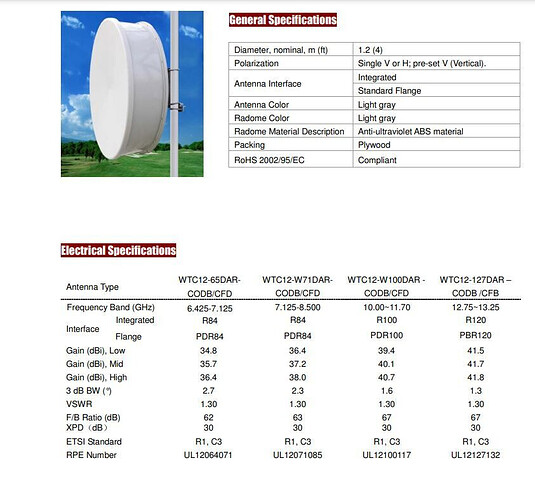-
Q. Describe primary function of an antenna in a microwave?
- A. The primary function of an antenna is to convert electrical signals into electromagnetic waves for transmission and vice versa for reception. It serves as the interface between the guided waves in the transmission line and the free-space waves.
-
Q. Explain the importance of the antenna’s radiation pattern in microwave communication.
- A. The radiation pattern describes how the antenna radiates energy in space. A well-designed radiation pattern ensures that the transmitted signal is directed where it’s needed, minimizing interference and maximizing coverage.
-
Q. What is Antenna Gain, and why is it crucial in microwave communication?
- A. Antenna gain is the measure of an antenna’s ability to direct or concentrate the radiated power in a specific direction. It is crucial in microwave communication to achieve longer communication distances and better link quality.
-
Q. Differentiate between Directivity and Gain in an antenna system.
- A. Directivity is a measure of how well an antenna focuses energy in a particular direction, while gain includes the antenna’s efficiency. Gain is directly related to directivity but also accounts for losses.
-
Q. Explain the concept of Beamwidth in the context of microwave antennas.
- A. Beamwidth is the angular width of the main lobe of an antenna’s radiation pattern. A narrower beamwidth allows for a more focused signal, while a wider beamwidth provides broader coverage.
-
Q. What are the factors influencing Antenna Polarization in microwave ?
- A. Antenna polarization is influenced by the orientation of the radiating elements. Common polarizations include horizontal, vertical, and circular. The choice depends on factors like interference and system requirements.
-
Q. Discuss the significance of Front-to-Back Ratio in microwave antennas.
- A. Front-to-Back Ratio is a measure of how well an antenna can discriminate between signals arriving from the front and signals arriving from the back. A higher ratio indicates better performance in rejecting unwanted signals.
-
Q. How does Antenna Diversity contribute to improving the reliability of microwave links?
- A. Antenna Diversity involves using multiple antennas at the receiver. It helps mitigate the effects of fading and improves link reliability by selecting the best signal from multiple antennas.
-
Q. Explain the term Cross-Polarization Discrimination in microwave antennas.
- A. Cross-Polarization Discrimination measures how well an antenna rejects signals with polarization orthogonal to the desired polarization. Higher discrimination is desirable to minimize interference.
-
Q. Discuss the advantages and disadvantages of Parabolic vs. Horn Antennas in microwave communication.
- A. Parabolic antennas are known for their high gain and directional properties, suitable for long-distance communication. Horn antennas offer a wider beamwidth and are often used for shorter-distance point-to-point links.
LinkedIn: ![]()
